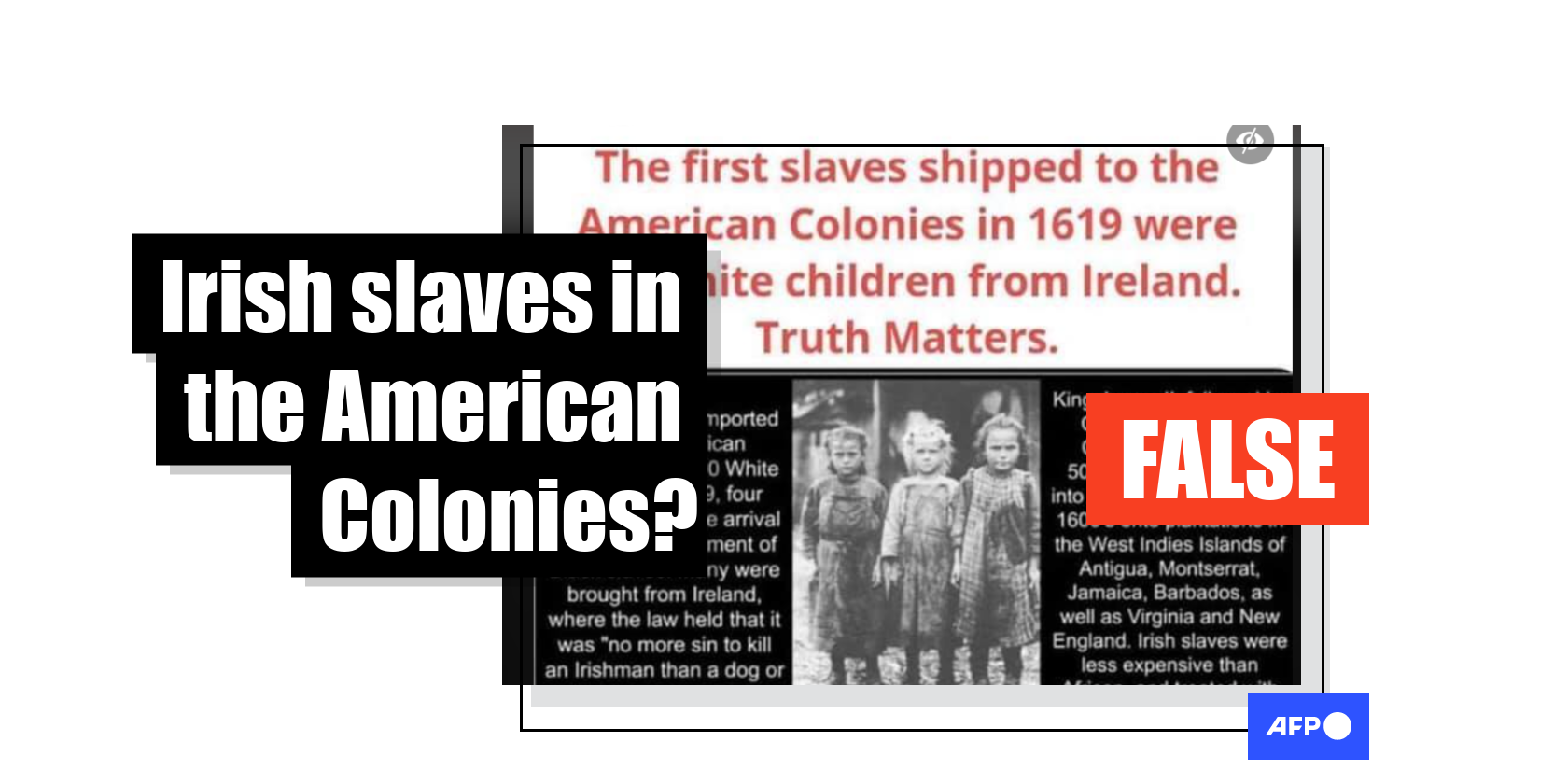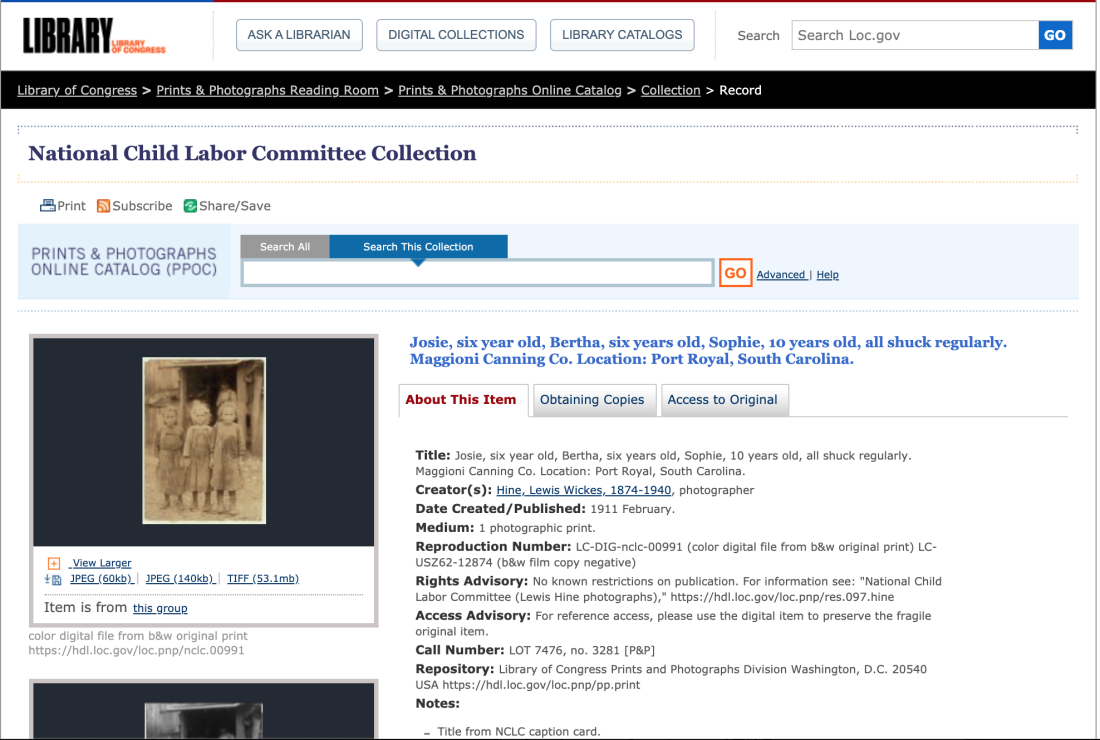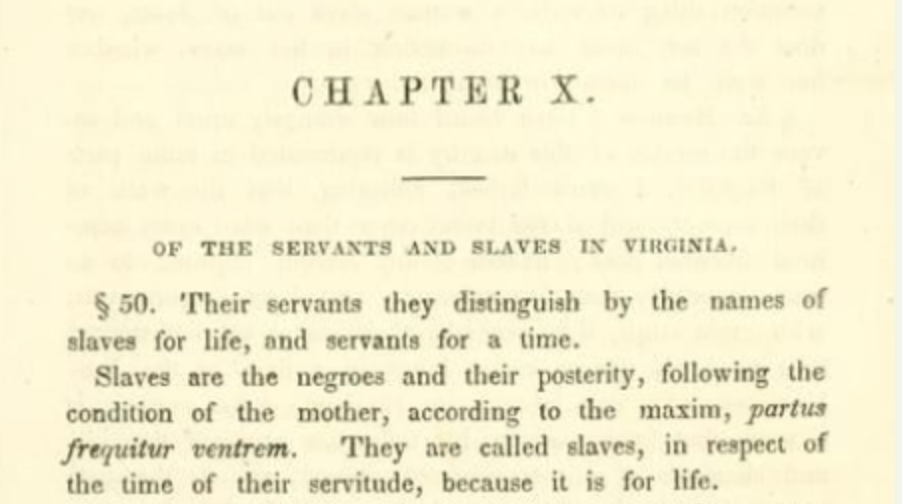
Photo used to support claim was taken hundreds of years later
- This article is more than five years old.
- Published on June 19, 2020 at 14:29
- Updated on September 16, 2020 at 16:13
- 5 min read
- By Alex CADIER
The post, shared more than 3,000 times in Canada and the United States, purportedly concerns white slavery in the American colonies, and features a photograph of three white children in worn down clothes. It concludes: “White Slavery, History Denied, Covered Up, & Marginalized”. Other versions of the same post have also been shared.

Misleading photograph
The photograph shared in the post, captioned “A Childhood in the factory” has no link to the early years of slavery and does not relate to the time period set out in the post.
“I believe the photo in question is this one, taken in 1911, found in the Library of Congress's National Child Labor Committee Collection,” Barbara Natanson, head of the reference section for prints and photographs division at the Library of Congress, told AFP by email.

The link confirms that the photograph, taken by Lewis Hine in 1911, depicts three shuckers in Port Royal, South Carolina, aged six and 10.
The photograph was part of a series taken by Hine, commissioned by the National Child Labor Committee in 1908. There is no evidence to show the children in the photograph were slaves.
The first slaves in the American colonies
The central claim of the social media post, that the first slaves “shipped to the American Colonies in 1619 were 100 white children from Ireland” is false.
As early as “1526, enslaved Africans were part of a Spanish expedition to establish an outpost on the North American coast in present-day South Carolina,” Michael Guasco, professor of history at Davidson College told AFP by email, based on his publication on the African American Intellectual History Society website.
That is consistent with this publication by the Georgia Historical Society which points out that “negro [sic] slaves were first introduced, not in Virginia, but in Carolina. Likewise the first recorded instance of shipbuilding on the coasts of what is now the United States occurred at or near the mouth of Cape Fear River.”
Evidence of white slaves
The post claims that white slaves arrived in the American colonies “in 1619, four months before the arrival of the [sic] first shipment of Black slaves”.
There is evidence of the arrival of the first African slaves in Virginia in 1619, as recorded in this letter from John Rofle, to Edwin Sandys, treasurer of the Virginia London Company.
This letter is also recorded in The Library of Congress’ Virginia Records Timeline from 1610 to 1619.
The same timeline has no record of white children or white slaves being shipped to the American colonies.
Conflating slavery with indentured servitude
Describing white workers in the American colonies as slaves is false.
There is ample evidence that “English, Welsh, Scottish, and Irish nationals desiring immigration to the island, but lacking the means to pay their passage and sustenance, voluntarily indentured themselves.” according to Jerome Handler, senior scholar at Virginia Humanities and Matthew C. Reilly, assistant professor of anthropology at the City University of New York.
“Slaves are the negroes [sic] and their posterity, following the condition of the mother, according to the maxim, partus frequitur ventrem. They are called slaves, in respect of the time of their servitude, because it is for life. Servants, are those which serve only for a few years, according to the time of their indenture, or the custom of the country,” explains the History of Virginia by Robert Beverley Jr published in 1722.

This is confirmed by Brendan Wolfe, editor of Virginia Encyclopedia: “Indentured servants were men and women who signed a contract (also known as an indenture or a covenant) by which they agreed to work for a certain number of years in exchange for transportation to Virginia and, once they arrived, food, clothing, and shelter.”
Historically inaccurate quote
The claim that the law in Ireland in 1619 “held that ‘it was was no more [a] sin to kill an Irishman than a dog or any other brute.’” is false.
“This quote is not from the seventeenth century but the fourteenth, which makes it a full 300 years out of context,” says Liam Hogan, an Irish librarian and historian in this post on Medium, written in 2015. “The original quote was made in 1317 in the Remonstrance of the Irish Chiefs to Pope John XXII,” adds Hogan.
500,000 Irish catholics sold into slavery in the 16th century.
This claim is false.
“To put this into context, the total migration from Ireland to the West Indies for the entire 17th century is estimated to have been around 50,000 people and the total migration from Ireland to British North America and the West Indies is estimated to have been circa 165,000 between 1630 and 1775,” writes Hogan in this blog post.
Furthermore, the social media post claims that the first monarch to conduct these forced migrations was “James II, followed by Charles I and Oliver Cromwell”. However, James II’s reign started in 1685, 36 years after Charles I’s execution.
More than 100 Irish slaves “dumped” overboard?
Although this claim does describe a historical event, the contention that they were Irish slaves is false. The slaves were African.
“This unmistakably refers to the murder of between 132 to 142 African people by the crew of the slave ship Zong in late November 1781,” writes Hogan in this post.
Hogan confirms this with a quote from John Lee, the English solicitor general of the time. “What is this claim that human people have been thrown overboard? This is a case of chattels or goods. Blacks are goods and property; it is madness to accuse these well-serving honourable men of murder.”
According to the Southern Poverty Law Center, posts like these have been “weaponized by racists and conspiracy theorists before the Web and now reaching vast new audiences online.”
UPDATE: This article was updated on June 20 to change the headline.
Copyright © AFP 2017-2025. Any commercial use of this content requires a subscription. Click here to find out more.
Is there content that you would like AFP to fact-check? Get in touch.
Contact us
